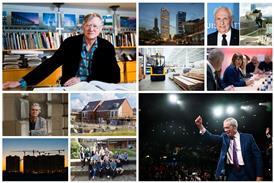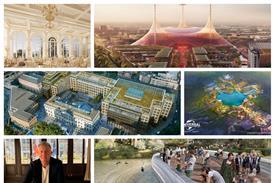The shift away from carbon is going to place a greater strain on our electrcity infrastructure. We need to plan now for a greener future, writes Elisa Sartori

There is a need for longer term thinking on energy sources and the capacity of the electricity grid if we are to have a positive impact on the environment.
On the surface, the UK’s commitment to achieve net zero carbon by 2050 is a positive step but may have unintended consequences. A shift away from the use of gas will likely mean greater electricity demand as heat pumps become more widely used.
In addition to this, more electric vehicles, large data centres and an increased urban population will generate potential issues in terms of network capacity. Mitigating these risks is crucial for the long-term sustainability of our cities. The actions we need to take can be divided into two categories: managing demand, and improving the supply.
As designers, we should maximise the benefits of materials
Designers need to find ways to reduce the energy demand of buildings, with a focus on high-performing envelopes, passive systems, energy efficient plans, optimization of the controls, and automation. This doesn’t apply only to new construction, but to the whole built environment, with improved energy performance in existing buildings playing a crucial role.
A holistic approach to the design, and coordination between disciplines at all design stages, would contribute to strong and customised design solutions for each project. As designers, we should maximise the benefits of materials – in terms of structural and energy performance, sustainability and aesthetics – and focus on both embodied and operational carbon emissions.
The selection of an efficient building services strategy must be followed by post-occupancy monitoring and evaluation, to ensure buildings perform and work as intended. This holistic data monitoring approach will also improve the future design of other buildings.
Unless we have a major breakthrough in nuclear technology, decarbonizing the electricality grid will require a greater dependence on renewables
Where possible, we also need to consider alternatives to air source heat pumps when selecting heating systems. Thinking with a circular mindset, ‘waste’ can become a precious resource. Beyond energy from waste plants (EFW), sewer lines, water treatment plants, data centres, industrial waste, and heat from tube shafts should be integrated in the heat supply.
If open-source waste heat maps were available to designers, this transition could be accelerated. Peak load mitigation through thermal storage and ambient loop heat networks – where the coexistence of heating and cooling loads reduces the primary energy demand – should be part of early project explorations as standard, and then deployed where appropriate.
While doing our best to reduce energy demand, at a national level, governments and energy companies need to collaborate to improve the energy supply. Unless we have a major breakthrough in nuclear technology, decarbonizing the electricality grid will require a greater dependence on renewables, which are less controllable than traditional systems. It is expected that this would be managed on a national scale via storage and smart systems, but we also need to explore what can be done locally in applying these strategies, at building and wider developments level.
Architects and design teams must integrate all active and passive elements from the early stages of design
The is a consensus within central government that energy performance of buildings urgently needs to improve. Beyond targets and legislation, it is time for the government to look at financial incentives for building owners and designers to trial the most innovative systems and gradually create buildings which are less heat and power intensive.
Energy demand and supply strategies have a huge impact on the building configuration. Architects and design teams must integrate all active and passive elements from the early stages of design, and use a holistic approach on alternative generation systems which could be developed in the future.
There is an equal need for enhanced policies and proactive engineers. Accountability is key, both within the design team and for clients – it is important that we see methods like peak load mitigation and holistic data monitoring as a minimum for good services design, rather than lofty or optimistic targets.
Postscript
Elisa Sartori is an associate at Webb Yates
















1 Readers' comment